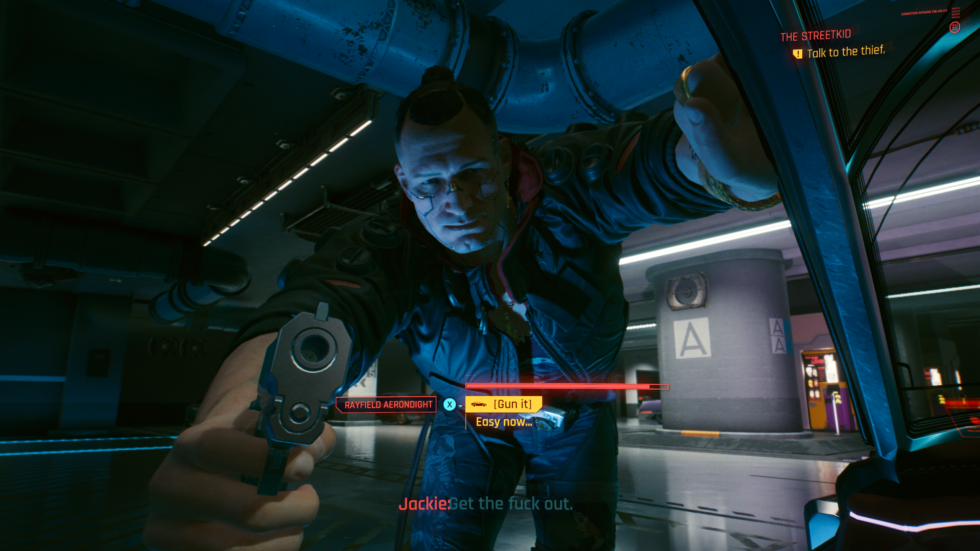-

I still wonder what would have happened if I tried to gun it, but I was a wimp.
Cyberpunk 2077, the first game by CD Projekt Red since 2015’s triumphant The Witcher III: Wild Hunt, delivers perhaps the most ambitious open-world facade to date. Open-world games like Grand Theft Auto to Watch Dogs are just facades, after all—giant virtual theme parks that try to get gamers to suspend their disbelief and buy in to fully inhabiting a new world.
CDPR’s Night City—its retro-futuristic take on Los Angeles—is a triumph of speculative urban, architectural, and narrative design. It’s a truly stunning imagined city of the future that doesn’t feel like a scaled-down virtual compromise. Just existing in this space is a joy, whether you’re eavesdropping on the citizens going about their day or diving deep into the city’s criminal and technological underworld.
But the more you start poking at that facade, the less convincing it seems. The smoothness of the presentation makes it all the more glaring when you run into major holes in the game’s simplistic combat, encounter frequent glitches, or reach confusing moments when the conversational or plot paths break down. More often than you’d like, Cyberpunk 2077 leaves you scratching your head.
It’s the uncanny valley effect, just extended to an entire city. Cyberpunk 2077 gets so close to utter believability that you can’t help but pick out all the inherent video game imperfections.





